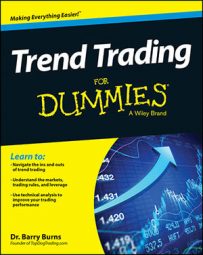Floor trader pivots are support/resistance levels that floor traders have used in the pits of the exchanges for many years. They define an equilibrium point (considered a neutral market) called the pivot point or central pivot.
The market is considered bullish when it’s above the central pivot.
The market is considered bearish when it’s below the central pivot.
Because the floor traders use these levels, they’ve become popular among people who trade off the floor, attempting to follow the same techniques used by the professionals trading on the floors of the exchanges.
Calculate floor trader pivots
The most popular method for calculating floor trader pivots is the original formula. The formula uses the previous day’s high, low, and close to calculate the central pivot (neutral area for the market):
Central pivot = (High + Low + Close)/3
Three levels of resistance are plotted above the central pivot with the notations of R1, R2, and R3. And three levels of support are plotted below the central pivot with the notations of S1, S2, and S3.
You then calculate these support/resistance levels based on the following formulas:
R1 = 2(Central pivot) – Yesterday’s low
R2 = Central pivot + (Yesterday’s high – Yesterday’s low)
R3 = Central Pivot + 2(Yesterday’s high – Yesterday’s low)
S1 = 2(Central pivot) – Yesterday’s high
S2 = Central pivot – (Yesterday’s high – Yesterday’s low)
S3 = Central pivot – 2(Yesterday’s high – Yesterday’s low)
Don’t worry if you have trouble understanding how to calculate the floor trader pivots. You’ll never have to do the calculations manually. You can find plenty of websites that have floor trader pivot calculators to do the math for you; simply type “floor trader pivot point calculator” into your favorite Internet search engine. In addition, many charting software programs have floor trader pivot indicators that automatically draw the levels when applied to your charts.
Other formulas for calculating pivots exist. Some of them have been created by reputable traders and may be useful. However, using the traditional calculation is best simply because it’s the one used by most traders. Market movements are often caused in response to what the masses see.
How and why floor trader pivots work
In the figure, you can get a feel for how the central pivot is the neutral point, the pivot levels above it (R1, R2, R3) provide resistance, and the pivot levels below it (S1, S2, S3) provide support.
![[Credit: Figure by Barry Burns]](https://www.dummies.com/wp-content/uploads/448346.image0.jpg)
This example is fairly typical. Some days, the market stays between S1 and R1. Such days are considered neutral and directionless. They’re also characterized by low volatility and don’t provide great opportunities for large profits because the range of the market is limited.
When the market gets above/below one of the floor trader pivots, the next floor trader pivot is often used as the next profit target.
Markets rarely break above R2 or below S2. When they do, the market is considered to be in an extremely bullish or bearish mode, respectively.

